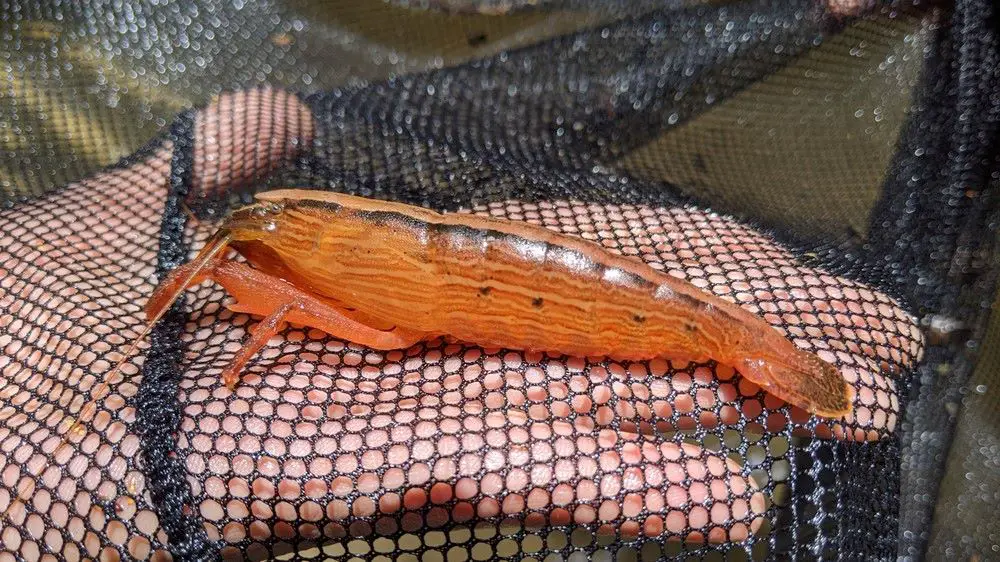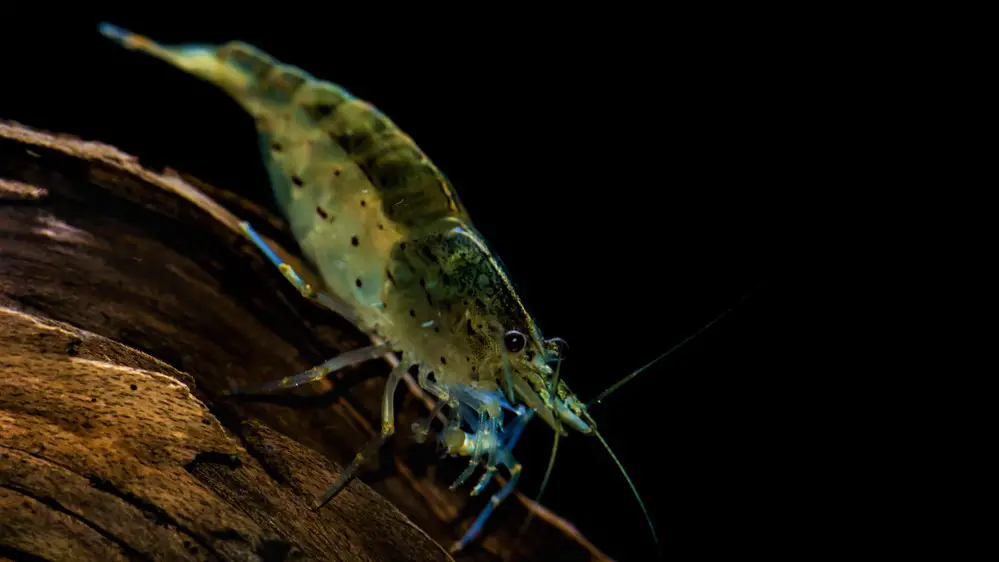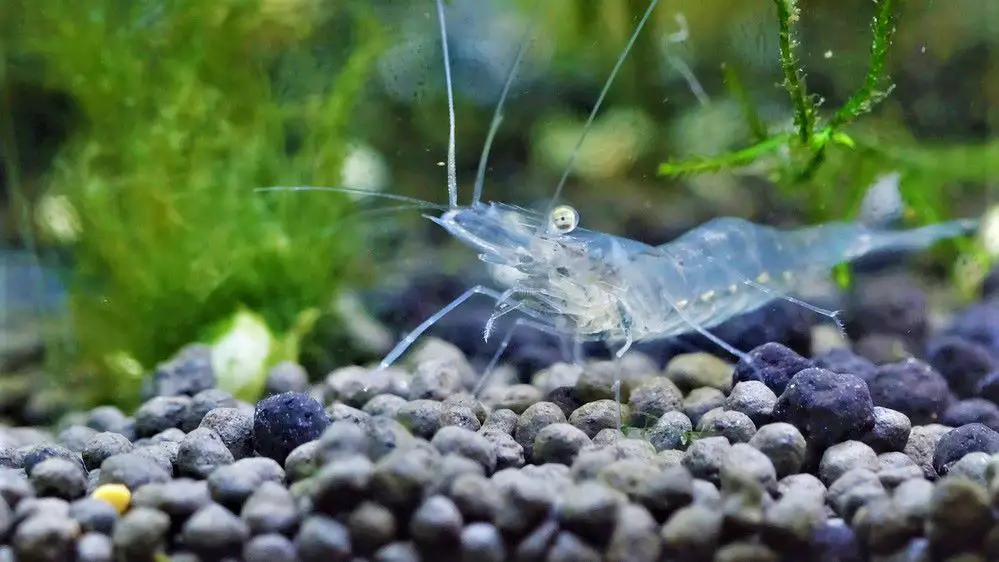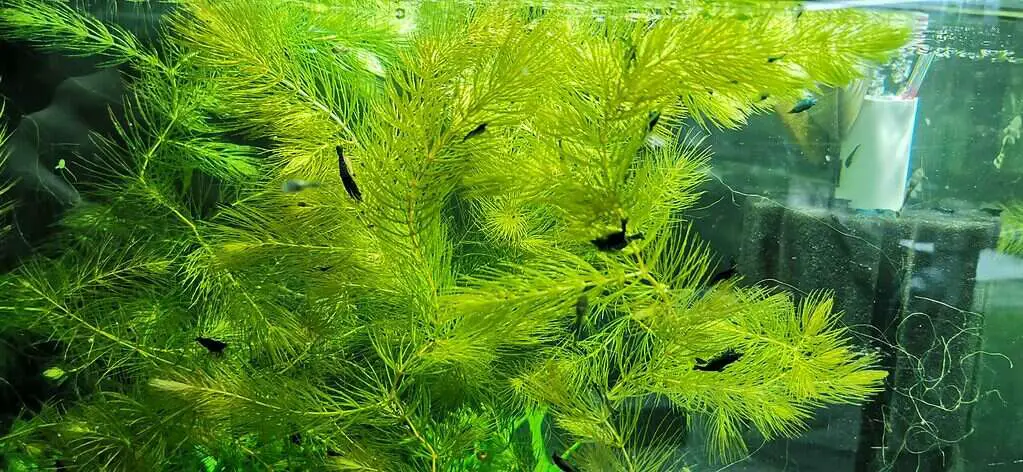Imagine this: You’re a dedicated shrimp keeper, and you’ve been nurturing a vibrant community of neocaridina and caridina shrimp. You’re also a fan of the colorful Bolivian Rams, thinking, “Wouldn’t it be great to add some of these lively fish to my tank?”.
But then, a question pops up in your mind, “Can I keep Bolivian Rams and shrimp together?” This question is not just about aesthetics, but also about the survival and well-being of your beloved aquatic pets.
The answer is nuanced. For smaller shrimp species like neocaridina and caridina, it’s generally a no. Bolivian Rams may see these tiny creatures as a snack. However, the answer is a yes for larger shrimp species such as ghost shrimp, amano shrimp, and bamboo shrimp. These shrimp are typically too big to be considered food by the Bolivian Rams.
As a fellow shrimp keeper, I’ve had my fair share of trials and tribulations. I remember when I first started out, I was so excited to mix and match different species in my tank. I thought, “The more, the merrier, right?” Well, not always. I quickly learned that not all aquatic species play nice together.
For instance, I once added a few Bolivian Rams to my tank, which was already home to a thriving community of neocaridina shrimp. To my dismay, I noticed the shrimp population dwindling over time. It was a hard lesson, but it taught me the importance of researching compatibility before introducing new species to the tank.
Over the years, I’ve found that larger shrimp species like ghost, amano, and bamboo shrimp can coexist with Bolivian Rams. They’re just big enough to avoid becoming a meal! So, if you’re considering adding Bolivian Rams to your shrimp tank, remember: size matters.
In the following sections, we’ll dive deeper into this topic, exploring why these compatibility issues exist and how you can create a harmonious tank environment. So, buckle up, fellow shrimp keepers, and let’s embark on this aquatic adventure together!
What Makes Bolivian Rams a Potential Threat to Small Shrimp Species?
Bolivian Rams, while beautiful and lively additions to any aquarium, can pose a threat to small shrimp species due to their natural predatory instincts. In the wild, Bolivian Rams are omnivores, consuming plant matter and small invertebrates. This diet often includes small crustaceans, which, unfortunately for our tiny shrimp friends, they resemble quite closely.
When you introduce Bolivian Rams into a tank with small shrimp species like neocaridina or caridina, the Rams don’t see these shrimp as tank mates, but rather as potential meals. It’s not a matter of the Rams being aggressive or ill-natured, but simply them following their natural dietary instincts.
The size of the shrimp plays a significant role in this dynamic. Small shrimp species are just the right size to fit into the mouth of a Bolivian Ram, making them easy targets. This is why larger shrimp species, such as ghost, Amano, and bamboo, are generally safe from the Rams. Their size makes them less appealing as a food source, allowing them to coexist more peacefully in the same tank.
So, while Bolivian Rams can be a wonderful addition to many aquariums, it’s essential to consider their natural behaviors and dietary preferences when deciding which other species to include in your tank. In the case of small shrimp, it might be best to keep them separate to ensure their safety and longevity.

How Can I Ensure the Survival of My Small Shrimp Species When Bolivian Rams Are in the Tank?
Ensuring the survival of small shrimp species in a tank with Bolivian Rams can be quite a challenge, but it’s not entirely impossible. The key lies in creating an environment that provides ample hiding spots and resources for your shrimp.
One way to do this is by incorporating plenty of plants, rocks, and driftwood into your tank setup. These elements enhance the aesthetic appeal of your aquarium and provide essential cover for your shrimp. Small shrimp species are experts at hiding and can use these spaces to escape the attention of the Rams.
Another strategy is to maintain a large enough population of shrimp. In a densely populated shrimp tank, the loss of a few individuals to predation may not significantly impact the overall population. However, this approach should be used with caution as overpopulation can lead to other problems such as insufficient resources and poor water quality.
Feeding your Bolivian Rams adequately is also crucial. A well-fed Ram is less likely to hunt for additional food. Provide a balanced diet that meets the Rams’ nutritional needs, and ensure they are eating regularly.
Lastly, consider the size of your tank. A larger tank provides more space for your shrimp to spread out and avoid the Rams. It also allows for more hiding spots and reduces the overall density of the tank inhabitants, making it harder for the Rams to single out individual shrimp.
What works for one may not work for another. It’s all about finding the right balance and making adjustments as needed. While it’s possible to keep small shrimp with Bolivian Rams, it may require more effort and careful monitoring than keeping them with more compatible species.

What Are the Characteristics of Larger Shrimp Species That Make Them Compatible with Bolivian Rams?
Larger shrimp species, such as ghost shrimp, amano shrimp, and bamboo shrimp, have certain characteristics that make them more compatible with Bolivian Rams compared to their smaller counterparts. The primary factor is, unsurprisingly, their size.
These larger shrimp species are typically too big to be considered food by Bolivian Rams. Their size makes them less appealing as a snack, and more likely to be seen as fellow tank inhabitants. This starkly contrasts smaller shrimp species, which can easily fit into the mouth of a Bolivian Ram and are often seen as a tasty treat.
Another characteristic of these larger shrimp species is their robustness. They are generally hardier and can withstand a wider range of conditions compared to smaller shrimp. This makes them more resilient in a mixed-species tank and less likely to succumb to stress or disease.
Additionally, larger shrimp species tend to be less timid and more active in their environment. This can help them avoid potential threats and compete more effectively for resources in the tank. They are also more likely to stand their ground when faced with a curious Bolivian Ram, rather than becoming an easy target.
Finally, many larger shrimp species, such as the amano shrimp, are excellent cleaners. They help maintain the tank’s cleanliness by eating algae and leftover food, which can contribute to a healthier and more balanced environment for all inhabitants, including the Bolivian Rams.
While the compatibility of Bolivian Rams with larger shrimp species is not guaranteed, their chances of cohabitation are significantly improved due to these characteristics. As always, careful observation and management of the tank environment are crucial to ensure the wellbeing of all its inhabitants.

How Can I Introduce Bolivian Rams to a Tank with Larger Shrimp Species?
Introducing Bolivian Rams to a tank with larger shrimp species requires careful planning and execution to ensure a smooth transition and minimize stress for all tank inhabitants. Here’s how you can go about it.
Before introducing the Rams, make sure your tank is well-established and stable. A mature tank with stable water parameters is less likely to experience drastic changes that could stress the new arrivals. Also, ensure that the tank is spacious enough to accommodate the Rams without causing overcrowding.
Next, prepare the tank environment. Larger shrimp species, like ghost, amano, and bamboo shrimp, will appreciate plenty of hiding spots. Incorporate plants, rocks, and driftwood to provide cover and create a diverse, enriching environment. This will also give the shrimp places to retreat to if they feel threatened by the new arrivals.
When you’re ready to introduce the Rams, don’t just drop them into the tank. The drip acclimation method will gradually introduce them to the tank’s water parameters. This involves placing the Rams in a separate container and slowly adding small amounts of tank water over a period of several hours.
This slow acclimation process helps prevent shock and gives the Rams time to adjust to their new environment.
Once the Rams are acclimated, gently release them into the tank. Monitor their behavior closely over the next few days. Look out for any signs of aggression towards the shrimp or other tank inhabitants. If you notice any issues, you may need to adjust the tank setup or consider separating the species.
Every tank and its inhabitants are unique. What works well for one setup might not work for another. Always monitor your tank closely, especially after introducing new species, and be prepared to make adjustments as needed. With careful planning and management, creating a harmonious tank environment with Bolivian Rams and larger shrimp species is possible.

What Are Some Signs of a Harmonious Tank Environment When Keeping Bolivian Rams and Shrimp Together?
A harmonious tank environment is one where all inhabitants coexist peacefully, exhibiting natural behaviors and showing signs of good health. When keeping Bolivian Rams and shrimp together, several signs indicate a balanced and thriving ecosystem.
One of the first signs is the absence of aggressive behavior. Bolivian Rams and shrimp should be able to swim freely without showing signs of stress or fear. If the Rams are not chasing or attempting to eat the shrimp, and the shrimp are not constantly hiding, this is a good indication of harmony.
Another sign is the healthy appearance and behavior of both the Rams and the shrimp. The Rams should display vibrant colors, have a good appetite, and show active exploration of the tank. The shrimp should also be active, foraging for food and interacting with their environment. Both species should exhibit regular growth and molting.
A stable and clean tank environment is another sign of harmony. The water parameters should remain consistent, and there should be no signs of disease or parasites. Algae levels should be under control, thanks to the cleaning efforts of the shrimp, and leftover food should not accumulate.
Finally, successful breeding is a strong sign of a harmonious environment. If your shrimp are breeding and the juveniles are surviving, this indicates that they feel safe and secure in their environment. Similarly, if your Bolivian Rams are laying eggs and exhibiting breeding behaviors, this is a good sign that they are comfortable in the tank.
Remember, achieving harmony in a mixed-species tank requires careful planning, ongoing observation, and occasional adjustments. But when done right, the result can be a vibrant, dynamic, and harmonious aquatic community.
Conclusion: Bolivian Rams and Shrimp – A Delicate Balance
Keeping Bolivian Rams and shrimp together in the same tank is a delicate balancing act. While it’s not impossible, it requires careful planning, ongoing observation, and a willingness to make necessary adjustments.
Smaller shrimp species may find themselves on the menu for Bolivian Rams, while larger shrimp species like ghost shrimp, amano shrimp, and bamboo shrimp are generally safe due to their size and robustness. Creating a tank environment with plenty of hiding spots and maintaining stable water parameters are key to ensuring a harmonious coexistence.
Remember, every tank and its inhabitants are unique, and what works well for one setup might not work for another. Always monitor your tank closely, especially after introducing new species, and don’t hesitate to seek advice if you’re unsure.
Please don’t hesitate to reach out if you need any help or have any questions. If you can’t reach me here, check out the aquarium shrimp keeping groups on Facebook – they’re a treasure trove of information and support.
Finally, remember that the goal is to create a thriving, harmonious environment for all your aquatic pets. With patience, knowledge, and a bit of trial and error, you can create a vibrant underwater community. Happy Shrimp Keeping!

FAQ: Bolivian Rams and Shrimp
Q. Can Rams live with shrimp?
A. Yes, Rams can live with shrimp, but the compatibility largely depends on the size of the shrimp. Smaller shrimp species may be seen as food by the Rams, while larger shrimp species are typically safe.
Q. What can be kept with Bolivian Rams?
A. Bolivian Rams can be kept with a variety of tank mates that are peaceful and of similar size. This includes larger shrimp species, tetras, and other non-aggressive fish. However, it’s always important to research and consider the specific needs and behaviors of each species before introducing them to the tank.
Q. Can Bolivian Rams live in a community tank?
A. Yes, Bolivian Rams are generally peaceful and can do well in a community tank. They can coexist with a variety of other peaceful fish and larger shrimp species. However, they may prey on smaller shrimp and fish.
Q. Do Bolivian Rams need to be kept in pairs?
A. Bolivian Rams can be kept alone, in pairs, or in small groups. They are not schooling fish but they do exhibit social behaviors. If kept in pairs or groups, ensure the tank is spacious enough to prevent territorial disputes.
Q. Will Bolivian Rams eat shrimp?
A. Bolivian Rams may eat smaller shrimp species that fit into their mouths. However, they are less likely to eat larger shrimp species, such as ghost shrimp, amano shrimp, and bamboo shrimp.
